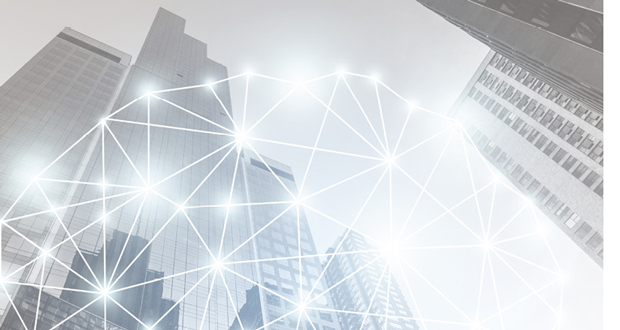Can Artificial Intelligence (AI) help us return safely to the office? Phil Ratcliffe, Managing Director, Drees & Sommer UK thinks that it can, while also enhancing our workplace experience
As cities come out from lockdown and restrictions are eased, more people are looking to return to their pre-pandemic “normal” lives and businesses across the country are planning how they return to their offices. This presents a significant challenge for employers and building managers who are responsible for ensuring social distancing measures are enabled, by providing a healthy environment for everyone amidst the general concerns of a possible second wave of infection. Technology can help facilities managers in adapting to the current situation and AI especially could play a crucial role in controlling the spread of the disease.
The applicability and suitability of AI brings a significant opportunity in FM and property management. However, our experience is that there is a lag between what current buildings are capable of, what technology offers and ultimately, the actual features that can be embedded within a building.
DIGITISED STANDARD
From an FM perspective, one of the main challenges we face now revolves around how to bring an established building up to a digitised standard. Ultimately, that will determine the kind of technology we can introduce. The technology is there but a building needs to be ‘digital ready’ to be able to cope with it. What needs to be done to ensure smart buildings are attractive to investors is making sure that they are future-proofed. The endless march of technology means that significant advancements can be made between the planning stage of a building and its completion; much of what was considered before construction even began, therefore, could well be out of date when it is finally finished. Buildings today must be digital-ready, flexible and capable of adopting new technologies. At Drees & Sommer, we have 50 years of FM excellence from across Europe, the ME and China. We tap into our pancontinental resources to understand and implement the new innovation with digital use.
Many technological developments we are seeing are still conceptual but there are examples where smart buildings have had an impact. Drees & Sommer consulted on cube berlin, completed in February 2020, which is equipped with an AI ‘brain’ – a central computer that constantly monitors and automatically acts on functions including heating, lighting and ventilation.
We have seen many achievements in terms of occupation density measurement and prediction. Particularly now in the COVID environment, wayfinding is also incredibly important.
One of the achievements in cube berlin is the efficiency improvement through ‘data dynamic’ building operation. Using heat sensors, the building provides heatmaps that generate data based on the occupier’s performance. This means that the building can interact with the user by sending suggestions and move people efficiently in the building.
This has remarkable impacts in terms of energy saving but could also be especially relevant to avoid the over density of people in a building. A passive cooling and heating system is also enabled at cube berlin, so the building can arrange the temperature of a specific room for when occupants will enter and even and allocate air accordingly. The AI brain constantly monitors and learns from user behaviour, so it is always improving.
CENTRE OF INNOVATION
At Drees & Sommer’s headquarters in Stuttgart, we are creating a new centre of innovation, investing in new technology to be able to test it in a live physical building environment and accelerate the route to market. The OWP 12 building will enable a demonstration of the use of the planned digital technologies which will make life easier for employees, clients and service providers during occupation. Apps can be used, for example, to grant access permissions, to book conference rooms or parking spaces and to adjust the settings of the heating, cooling, ventilation or lighting automatically to meet the individual needs of the different office users.
Another aspect of useful AI around predictability is how AI can inform building managers about the maintenance of utility services, electrical systems, heating and air conditioning systems before anything becomes detrimental; avoiding malfunctions and predicting significant maintenance costs.
There are many examples of how AI can improve communication between communities, not just within the environment at work. In terms of the high street, there is a real place for AI and tech to support the communication of people flow in real time. Technology has significant benefits to understand the use of public transport or even to avoid people queuing outside a shop and being able to inform customers on the best timings to visit shops – this could be extended across the city to facilitate a more evenly distributed people flow.





